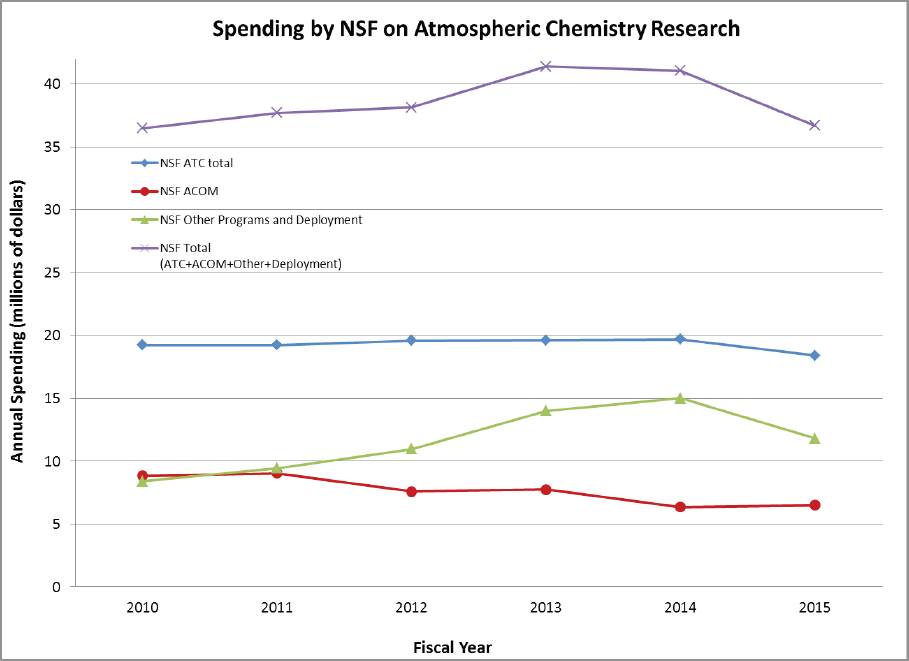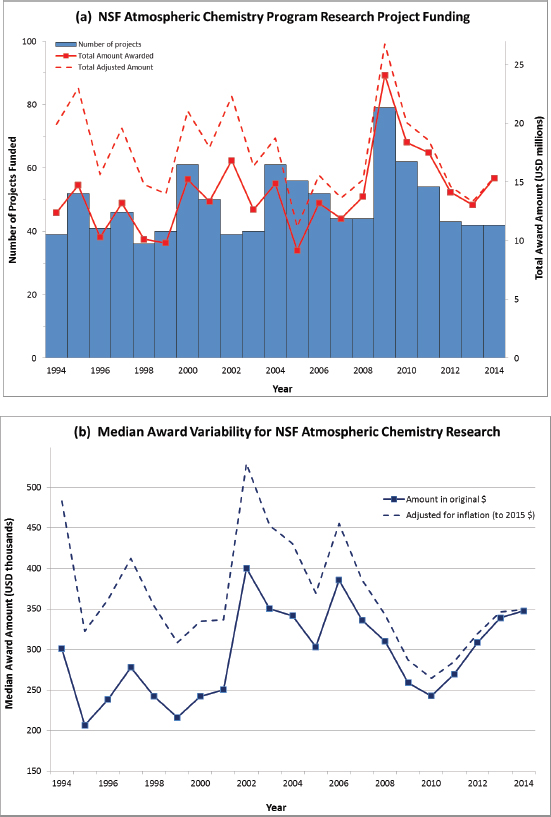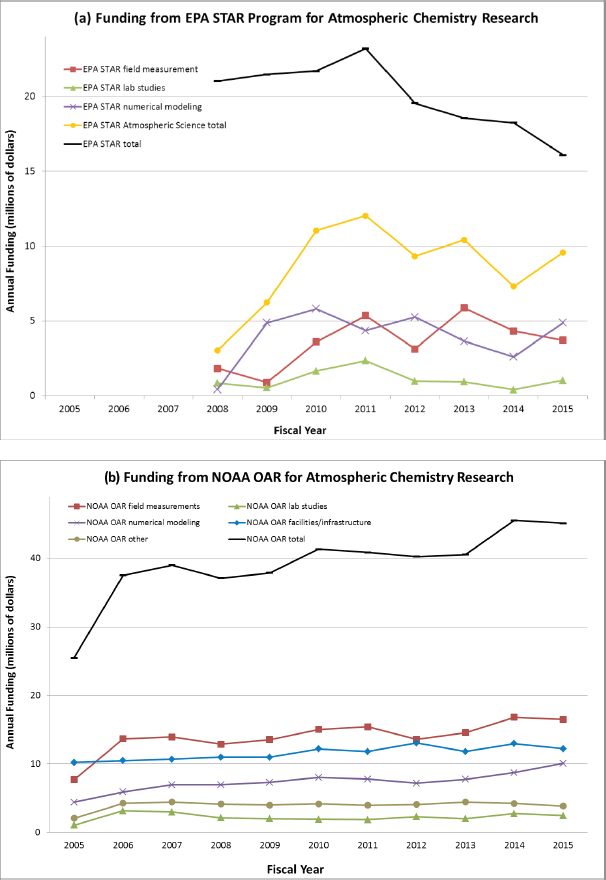APPENDIX C
Analysis of Funding Trends for Atmospheric Chemistry Research
In order to understand the trends that are currently occurring in the field of atmospheric chemistry and the research emphases of different federal departments, the Committee requested information from five government agencies that support atmospheric chemistry research: the Department of Energy (DOE), the National Aeronautics and Space Administration (NASA), the National Oceanic and Atmospheric Administration (NOAA), the National Science Foundation (NSF), and the U.S. Environmental Protection Agency (EPA). The recent trends in spending by these major atmospheric chemistry research funding agencies are shown in Figure 6.2. Figure C.1 further examines these trends for NSF research spending in terms of the Atmospheric Chemistry (ATC) program, the National Center for Atmospheric Research’s (NCAR’s) Atmospheric Chemistry Observations and Modeling (ACOM) Laboratory, and “other” NSF program and deployment funding (see figure legend for details) related to atmospheric chemistry research.
In addition, the Committee examined trends in the awards granted in atmospheric chemistry research by NSF. For these NSF awards, the total number of atmospheric chemistry research projects funded, the combined award amount, and the median award amount (Figure C.2) have not changed substantially over the past two decades. Year to year variability makes it challenging to discern any trends from this spending, but overall, total funding spent on Atmospheric Chemistry and the median budget per project (considering inflation) have not increased robustly in this time period.
The Committee also examined how support from the various agencies is divided among types of research approaches, including laboratory, field, and modeling studies. It is noted that there is often overlap of types of research within a given study, but these classifications indicate the general trends in the field as a whole. From 2006–2014 the NSF Atmospheric Chemistry program has fairly consistently spent roughly half of its budget on field projects, 25 percent on lab studies, 15 percent on modeling, 5 percent on instrument development, and 5 percent on “other” projects (see Figure 6.3). Between 2008–2015 the EPA Science to Achieve Results (STAR) program for atmospheric science research (not including graduate fellowships) has devoted about

10 percent of its funds on laboratory research (see Figure C.3a), with the rest split about evenly between field and modeling research. Note that while total STAR funding appears to have decreased over this time period, Atmospheric Science program funding has remained fairly constant, despite the drop in 2008 (modeling studies were funded less that year than in 2007 or 2009 to accommodate health priorities). Overall, NOAA Oceanic and Atmospheric Research (OAR) funding for research has modestly

NOTE: a Caveats with research.gov data: “Research Spending and Results displays grant awards active as of FY 1994 and beyond for NSF and active as of FY 2007 and beyond for NASA. Please note information may not be complete for awards that date prior to the Federal Funding Accountability and Transparency Act of 2006 (awards not active as of October 2006 and beyond). It does not provide award information for loans or contracts.”

NOTE: a For NOAA, “other” does not include facilities or infrastructure support.
increased from 2005–2015. On average, OAR spends about 35 percent of its funds on field studies, 20 percent on modeling work, which both appear to have risen in recent years, 5 percent on laboratory research, and the remaining 40 percent on facilities/infrastructure and “other” research (see Figure C.3b). While only a partial breakdown of DOE Climate and Environmental Sciences Division (CESD) funding figures was available for the 2005–2015 period, it is estimated that experimental lab work is relatively constant at approximately 25 percent of the budget, modeling funds also account for about 25 percent, and field observations comprise the remaining 50 percent of CESD funds.1 While we review only a few agencies, overall, most fluctuations in funding appear to be temporary and do not likely indicate substantial changes in research priorities within atmospheric chemistry.
___________________
1 Personal communication, Ashley Williamson, December 2015.
This page intentionally left blank.






